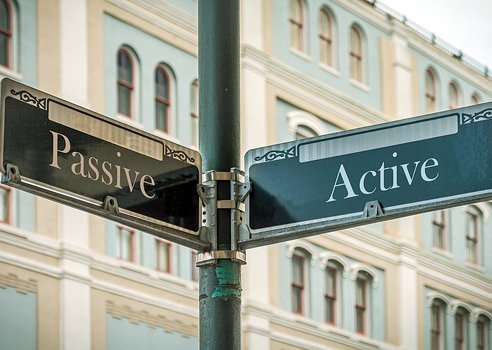Reading time: About 1 minute
This is my weekly installment of “writing about writing,” in which I scan the world to find websites, books and articles to help other writers. Today I discuss a blog post about active and passive scenes…
Writer J.D. Edwin has produced a very fine piece for The Write Practice blog addressing what she describes as “Active or Passive Scenes.”
Her concept is based on the idea of scenes being either active — the writer shows what is happening — or passive — the writer tells what happened. Here are Edwin’s two examples:
Passive:
Mr. Norton greeted the butcher in the morning. He does this every day, but the butcher, a rotund man in his late forties, did not seem to carry his usual sunny demeanor. Mr. Norton headed off to work and was left wondering what was wrong.
Active:
“Morning, Ed,” Mr. Norton gave the man behind the meat counter his usual smile. After five years, their morning greetings had become something of a ritual.
“Ah, John.” Ed glanced up from his work. He wiped his large hands, thick with bacon grease, on the apron hanging over his round belly. “Morning.”
“How’s business?”
“Can’t complain,” Ed replied. But something was different. A dark cloud hung over the eyes of the usually cheerful man. He opened his mouth as if to say something else, but then turned away and busied himself with a haunch of beef. Mr. Norton hurried toward the station, but couldn’t help glancing back over his shoulder, wondering if something was bothering the meat monger.
Edwin argues that both types of scenes have their place in writing and that active scenes are best for events need to move the story forward. Passive scenes, she argues, are better for “backstories” or for background information or character development.


